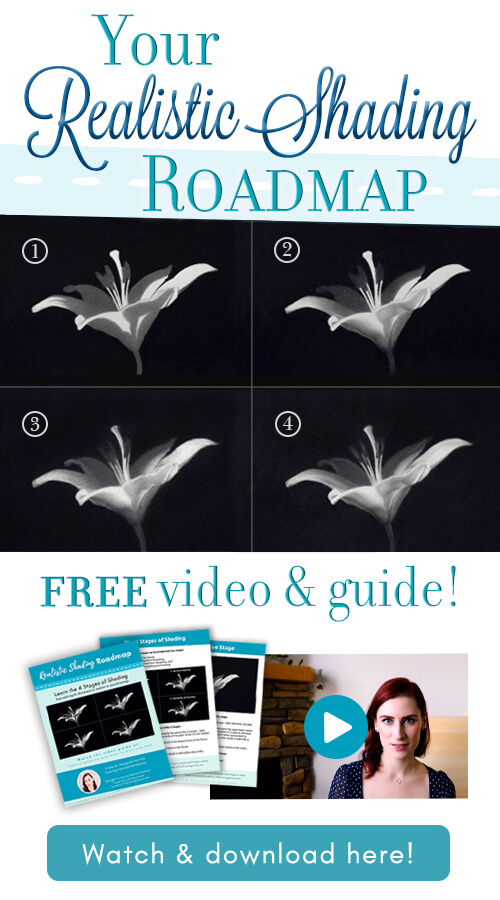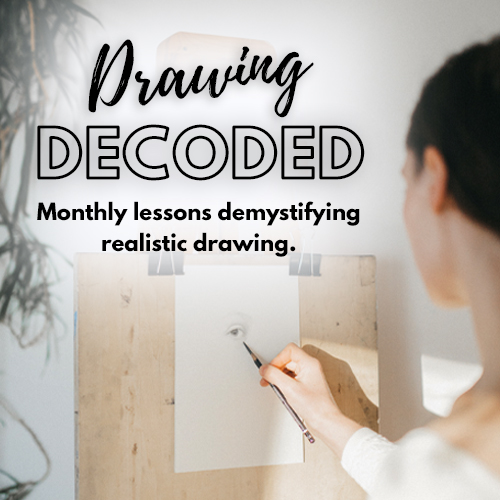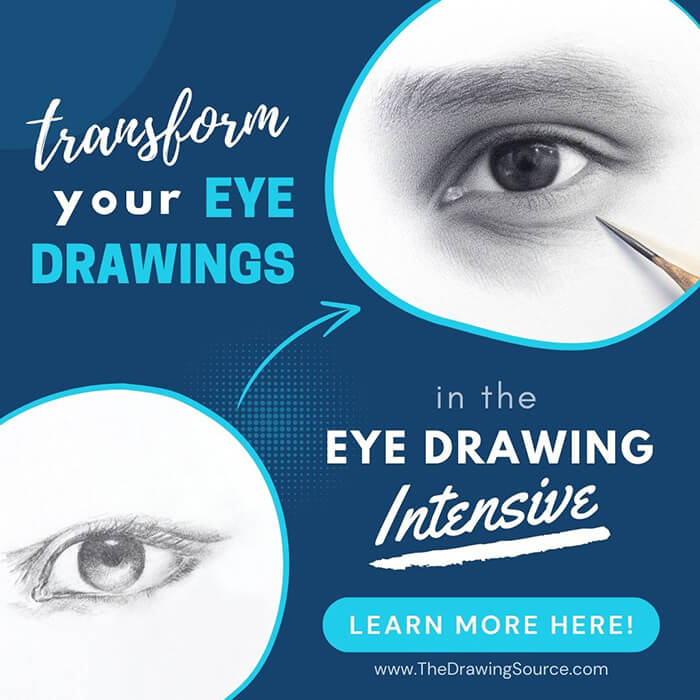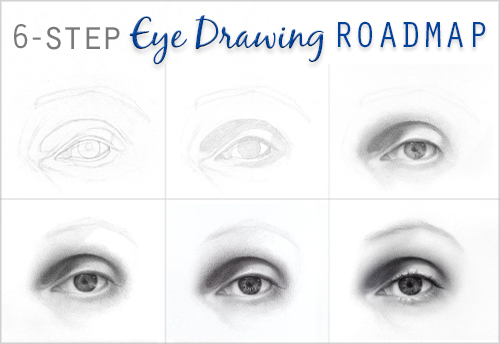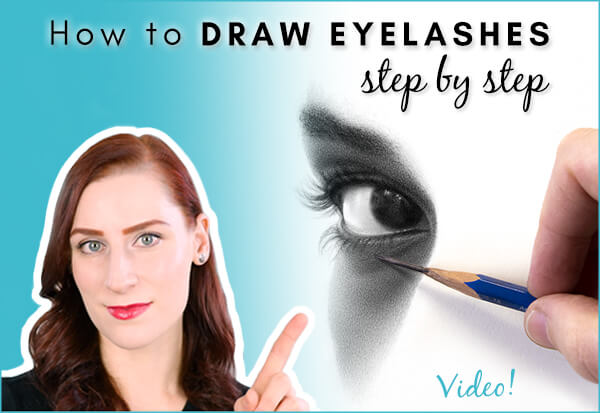Improve Your Figure Drawing
With These Seven Studies
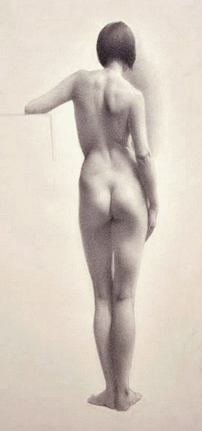
A great way to improve your figure drawing is to draw analytical studies before settling into your long-pose drawing.
Studies give you the opportunity to analyze and rehearse certain
elements of figure drawing individually, before having to juggle them
all together. They will also help you avoid unnecessary problems in your
drawing! The last thing we want is to realize, after several hours,
that we made a mistake early on that we cannot undo.
Maybe we should have placed the figure one inch to the right. Or perhaps
we spent an hour rendering the figure's back having interpreted the
muscles incorrectly.
These problems, and countless others, are entirely avoidable with a little bit of preparation in the form of drawing studies.
Think of it this way: It is much easier to get somewhere when you know where you're going. It's even easier when you plan how to get there.
These preparatory studies help you figure out just that: what you want to achieve in your drawing, and how to do so.
Here are some of the studies that I find incredibly helpful that are guaranteed to improve your figure drawing:
Improve Your Figure Drawing
with Thumbnail Sketches
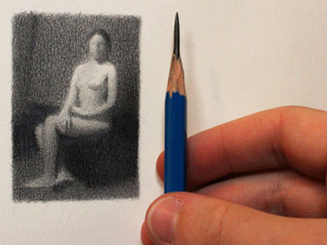
"Thumbnails" are small, quick sketches that allow you to explore various compositions and possibilities for your figure drawing.
They should be about the size of a postage stamp so that you can efficiently create many small-scale versions.
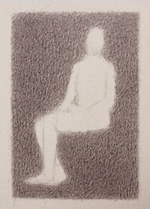
Planning the Placement of the Figure
The small size of thumbnails forces you to simplify the information in
front of you. This is a great benefit, because a simplified value
structure often creates a more effective composition.
In the sketch to the left, I have used the most basic, two-value thumbnail to plan the placement of the figure on the page.
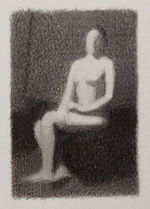
Analyzing the Value Structure
I progress to using three values to draw the large tonal masses of the composition. I use a light value (the white of the paper), a middle value, and a dark value.
Notice that just these simplified shapes drawn with three values are
already starting to create a convincing figure in an environment.
As you sketch you get to
know a pose, and begin to notice elements that you were previously
unaware of. For example, I notice how the model's left hand flows into
the line of the curtain in the background.
I also realize that this pose has a flowing figure eight shape. This
realization is bound to improve my figure drawing. If I keep it in mind
as I begin my long-pose drawing, I will be able to communicate the
rhythms in the pose and create movement in my drawing instead of ending
up with a very static image.
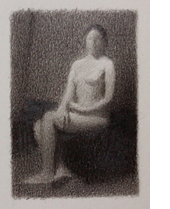
Finished Thumbnail Sketch
There
isn't always a need to move past the three-value stage of the
thumbnail. However, I did in this case because I wanted to study the
gradation throughout the body.
The study also showed me where to separate the figure from the background, and where to let the two merge together.
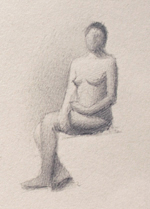
Other questions to consider when drawing thumbnail sketches are:
To include a background, or not?
What value range do you want to use?
Do you want to create a high or low key image?
All of these questions, and many more, can be answered by drawing thumbnail sketches!
Improve Your Figure Drawing
with Analytical Studies
While thumbnails are meant to be quick and loose,
analytical drawings are longer,
more in-depth studies of the figure in a particular pose.
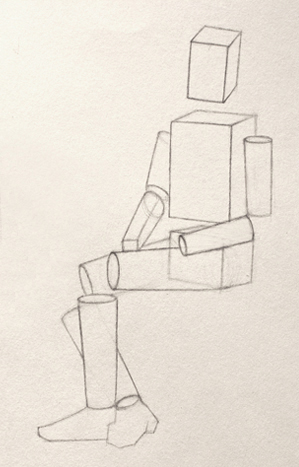
Volumes of the Figure
In the thumbnail sketch, our concern was the two - dimensional read of the pose. The next step is to think about the figure in three - dimensional space.
In order to achieve a convincing sense of depth, we can consider the
volume of the figure by visualizing it as a series of boxes and tubes.
Later on, we will be able to draw anatomical features over top of this structure.
This study helped me notice the slightly different angles of the head, rib cage and pelvis.
This will create a subtle but important movement in my drawing
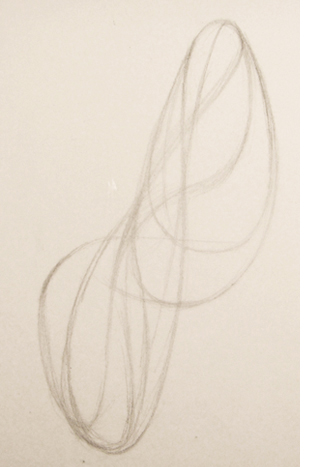 |
Gestures are the underlying flows that connect the elements of the figure. They can be found by selecting a line within the figure and following it to see where the movement naturally flows. |
Studying the gestures of a pose will counter the occasional stiffness of structural studies.
Using both studies in combination will improve your figure drawing by helping you achieve accurate structure and a sense of organic movement.
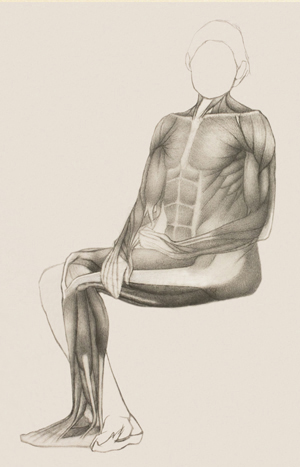 |
Anatomical Drawing
Throughout this site, you will often read about working from "general to
specific", from "simple to complex", or from "larger ideas to smaller
ideas". |
If you are new to the
study of anatomy, this type of drawing will take a considerable amount
of time. However, it is one of the best ways to improve your figure
drawing. Learning anatomy is crucal to your understanding and
appreciation of the figure.
Which analytical studies should you draw?
Every study has a specific purpose, and will help you solve an element
of your drawing. The studies you should draw depend on what you feel you
need to solve in your drawing! Decide what is unclear to you, and then
create the sketch or analytical drawing that will help you solve that
particular problem.
Do you have to draw all of these studies before beginning every drawing?
No. We often have limited time in front of the model, and I
don't draw all of these studies first, either. However, I strongly
suggest that you try it, and see the difference that it makes to have
studied so many elements of a pose in isolation, before combining them
in a complex drawing.
With practice, these studies will become "filters" through which you view the figure. You will eventually see the composition, structure,
rhythms, and anatomy while looking at your subject without having to draw each study.
You may also be interested in ...
Return to Figure Drawing from Improve Your Figure Drawing
Return to the Homepage from Improve Your Figure Drawing
